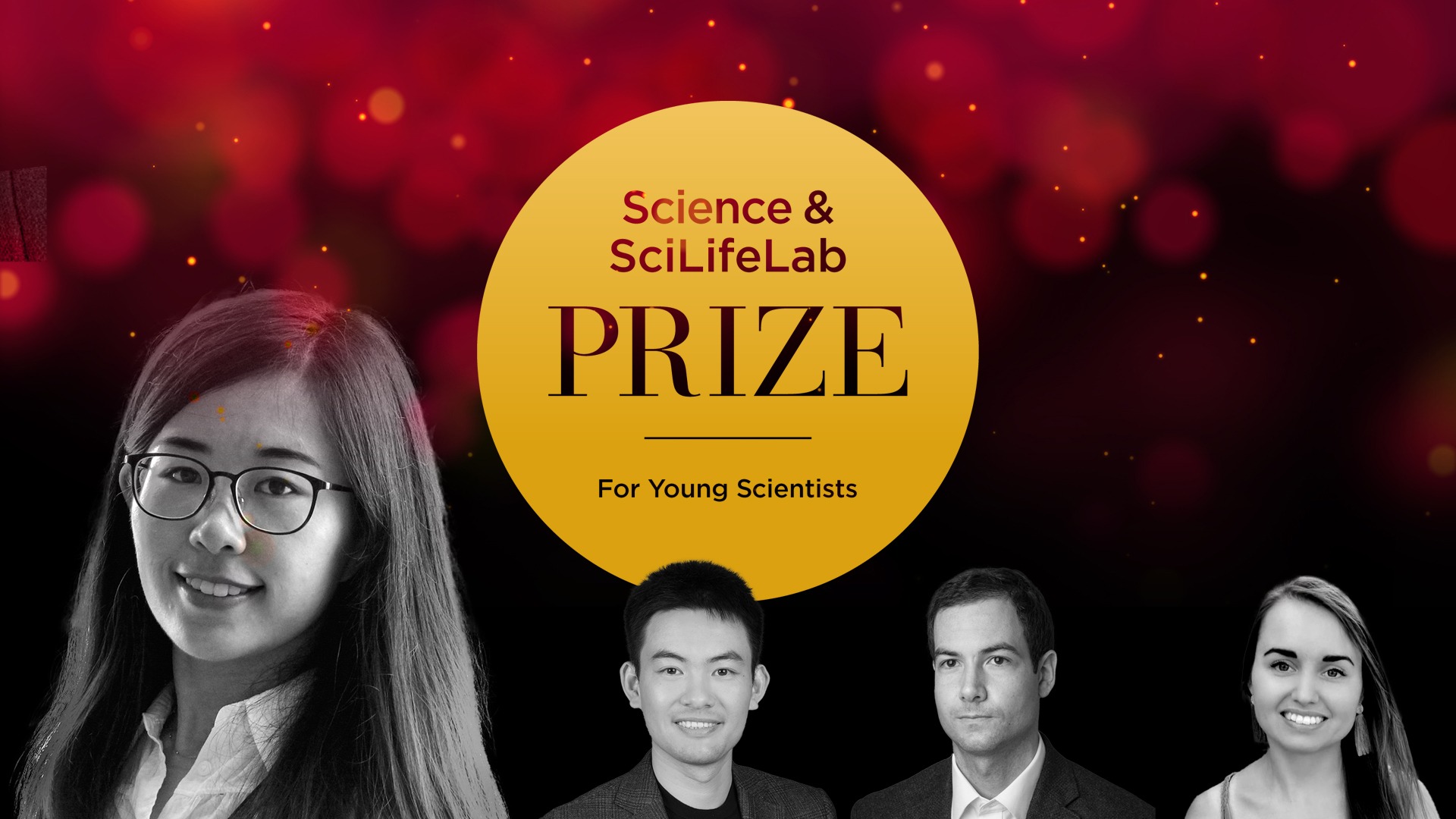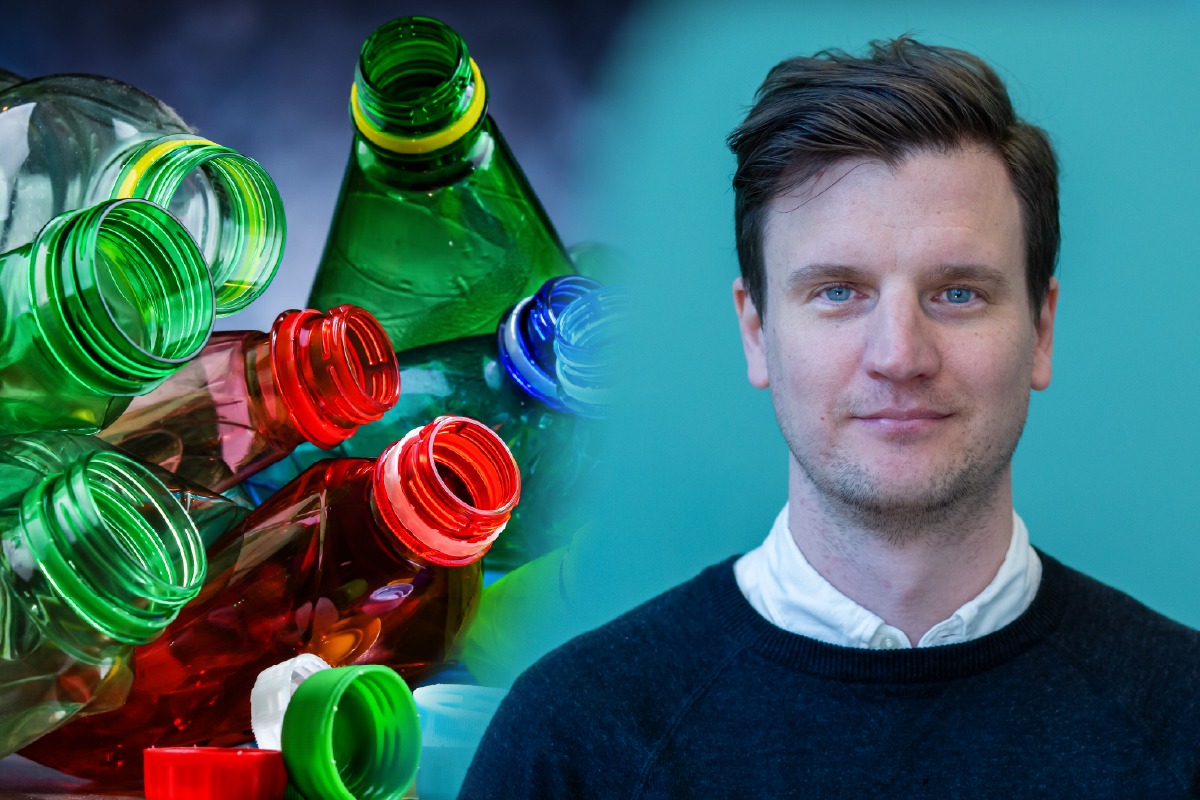Prize-Winning Research Reveals How Warm, Bright Cities Uniquely Influence Tree Greening
For illuminating how warmer temperatures and artificial light in cities alter the timing of urban tree leafing, Lin Meng is the grand prize winner of the 2021 Science & SciLifeLab Prize for Young Scientists.
Meng’s study – which revealed that tree leaves bud earlier in U.S. cities compared to rural areas, and that artificial light may accelerate this effect, as the climate warms – was unique for evaluating not only the impact of temperature change on plants, but also the impact of artificial light, which greatly alters the regular day-night cycle plants rely on.
“The effect of light pollution on vegetation phenology is a blind spot,” said Meng, a postdoctoral scholar at Lawrence Berkeley National Lab in Berkeley, California. “We as ecologists know a lot about the impact of warming and increased carbon dioxide concentration on plants because these are the two most significant aspects of climate change… but light doesn’t change in nature…So, most people just didn’t think of it.”
Meng said she found artificial light’s impact on trees evaluated in her study surprising – an impact that often goes overlooked when develop lighting strategies for city streets, she added.
“This research provides important insight into the impacts of the urban environment on natural processes essential to ecosystem function. Understanding how city-induced temperature and light influence vegetation both increases our knowledge of these basic ecological interactions and will help us design more resilient urban landscapes, ” said Sacha Vignieri, Deputy Editor for Research at Science.
Although climate warming has shifted the timing of global seasonal tree events like leaf budding and greening – also known as phenology – urban environments pose additional challenges for trees. These locations can be up to 3°Celsius warmer than the countryside, a phenomenon known as the urban heat island effect, and artificial light at night from advertising lights, buildings, public streetlights, and vehicles greatly impacts the regular light cycle plants depend on.
These human-induced changes may impact phenology even more than climate warming, Meng wrote in her prize-winning essay. Her interest in exploring this possibility was sparked by a trip to see cherry blossoms in Beijing, China, in 2015. “The forecast showed that the peak-blossom time was 10 days early at the downtown Central Park,” she said. “The night before I planned to visit Central Park to see the blossoms, but snow came unexpectedly, and what I saw the next day was an almost complete loss of those emerging blossoms.”
Trees that grow in places experiencing such fluctuations in temperature and leaf-greening timing can be at risk from factors like frost, or from a mismatch with the timing of other organisms (e.g., pollinators), said Meng.
Her observation of the cherry blossoms in Beijing inspired her to study how other urban environments impact tree growth, which has been difficult to do. “Cities exhibit higher temperatures and carbon dioxide, light pollution, and air pollution, so it’s challenging to disentangle all these effects,” Meng said.
Those studies that have explored cities’ influences on phenology in past were more focused at the local scale, and on impacts of urban heat islands. Meng built on this work but extended it to explore the whole United States.
Using satellite data, she compared spring “green-up dates” in urban versus rural areas in the 85 largest U.S. cities for the period 2001 to 2014. She found spring green-up occurred 6 days earlier in urban areas compared to rural areas on average, largely due to warmer city temperatures.
Her analysis also revealed that while urban tree greening shifted notably earlier than rural tree greening under climate change, urban tree greening responded to climate change at a slower rate than rural trees did.
“Urban trees were not chilled enough in winter, so they were less responsive when days warmed up in spring,” said Meng, to explain this difference.
She further wanted to tackle the question of artificial light’s role on tree greening and leaf coloring; artificial light’s presence in cities has rapidly increased in recent years, which is likely to continue. Since trees wait for a certain amount of daylight time to bud, a question in the field has been whether the tree leaves that bud earlier in the year due to warming will slow their earlier green-up when they encounter a shortened day.
“Right now is the best time to tackle the question of the ecological consequences of light pollution because we have more and better satellite products of artificial light… that enable us to see daily light intensity across the globe,” said Meng.
In a study of trees in the Alps of Europe, a region with a relatively uniform temperature distribution but changing daylengths across latitudes, Meng confirmed that shorter photoperiods – days with less light – reduced the early shift in spring green-up caused by climate warming. In cities, however, the presence of artificial light means days are extended, in terms of light offered. Meng wanted to know whether this removes the constraint put on earlier greening, as seen in places like the Alps.
Using newly released artificial light satellite data from NASA Black Marble and phenology observations from the USA National Phenology Network to examine phenology with and without artificial light in the United States, Meng explored artificial light’s influence on the earlier trend in green-ups in U.S. cities. She found artificial light made the spring green-up early by 9 days in locations with intense artificial light.
“My findings highlight artificial light as an understudied factor on phenology, which may supplement daylength and facilitate earlier spring greening under a warmer climate,” said Meng.
In future research, Meng would like to investigate how different vegetation species respond to different parts of the light spectrum; for example, LEDs that emit a broad-spectrum light will have a different ecological impact than sodium streetlamps that mainly emit on the yellow-orange part of the spectrum. Another area of interest is identifying the critical period during which trees are the most sensitive to artificial light. “Answers to these questions will inform decision-making on what types of light we need for different locations to minimize ecological consequences,” said Meng.
The Science & SciLifeLab Prize for Young Scientists aims to enable a vibrant research community and incent the best and brightest to continue in their chosen fields of research, as they begin their scientific careers. The grand prize winner receives a prize of US$30,000.
“This year’s awardees have shown that they can both conduct excellent research and, importantly, in a compelling way explain this to a broader audience” said SciLifeLab Director Olli Kallioniemi. “I hope and believe this prize will further boost these young researchers’ already very promising careers.”
CATEGORY WINNERS
Adrian Baez-Ortega is the category winner for Genomics, Proteomics and Systems Biology Approaches for his essay, “Mutations trace the evolution of an ancient tumor lineage.” He received undergraduate and postgraduate degrees in computer science from the University of La Laguna, Spain, and a PhD in biological sciences from the University of Cambridge. Since 2020, he has held a postdoctoral fellowship at the Wellcome Sanger Institute and a junior research fellowship at Magdalene College, Cambridge. His research focuses on the biological processes that shape the evolution of normal somatic tissues and contribute to age-associated disease.
Wenfei Sun is the category winner for Molecular Medicine for his essay, “Fat for heat.” He received his undergraduate degree from China Pharmaceutical University, master’s degree from Columbia University and Dr sc. from ETH Zürich. He started his postdoctoral fellowship at Stanford University in 2021. His research leverages single-cell genomic approaches to study the progression of metabolic diseases and memory formation.
Anete Romanauska is the category winner for Cell and Molecular Biology for her essay, “Seeing fat inside the nucleus.” She received an undergraduate degree from the University of Latvia and a PhD from the Max Perutz Labs at the University of Vienna. As of 2020, Anete is a postdoctoral researcher at the Max Perutz Labs, where she investigates how lipid saturation affects membrane functionality.
The Science & SciLifeLab Prize for Young Scientists is made with the support of the Knut and Alice Wallenberg Foundation.





